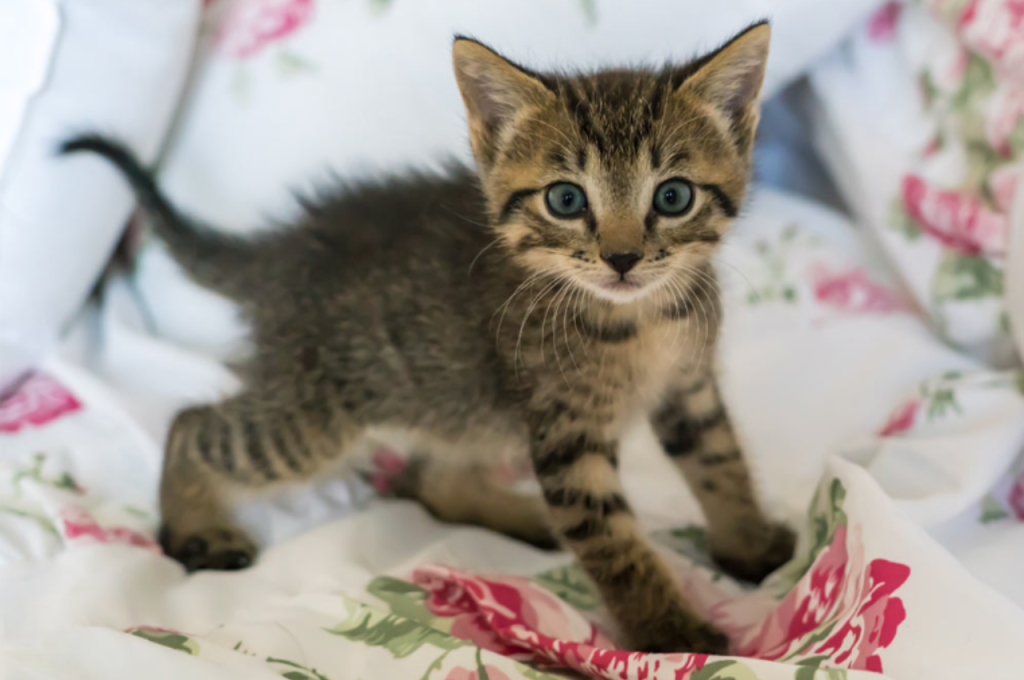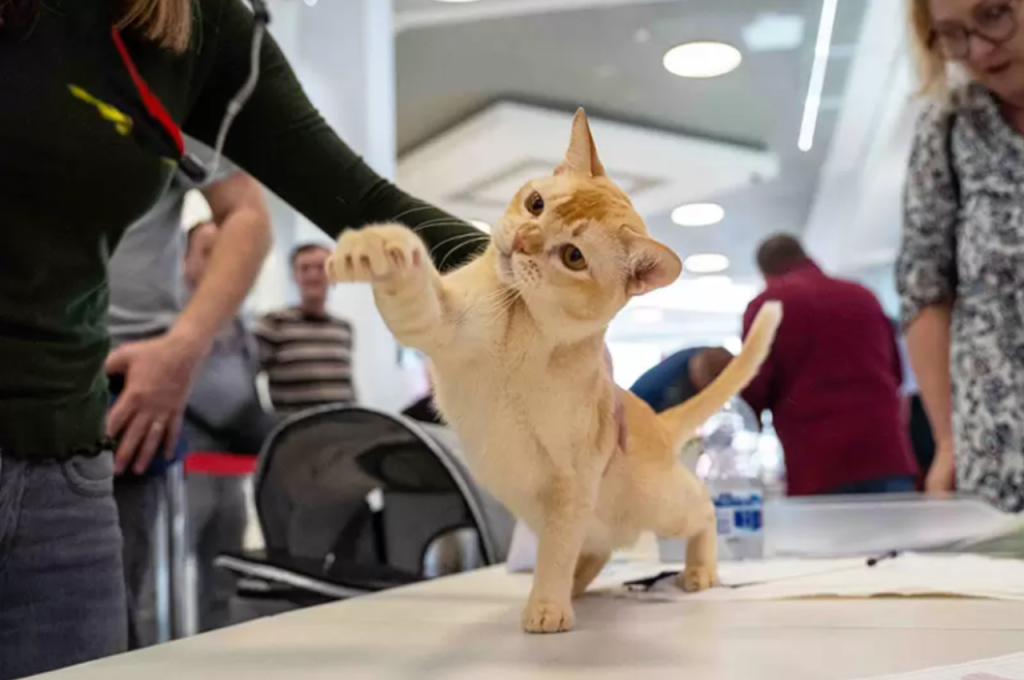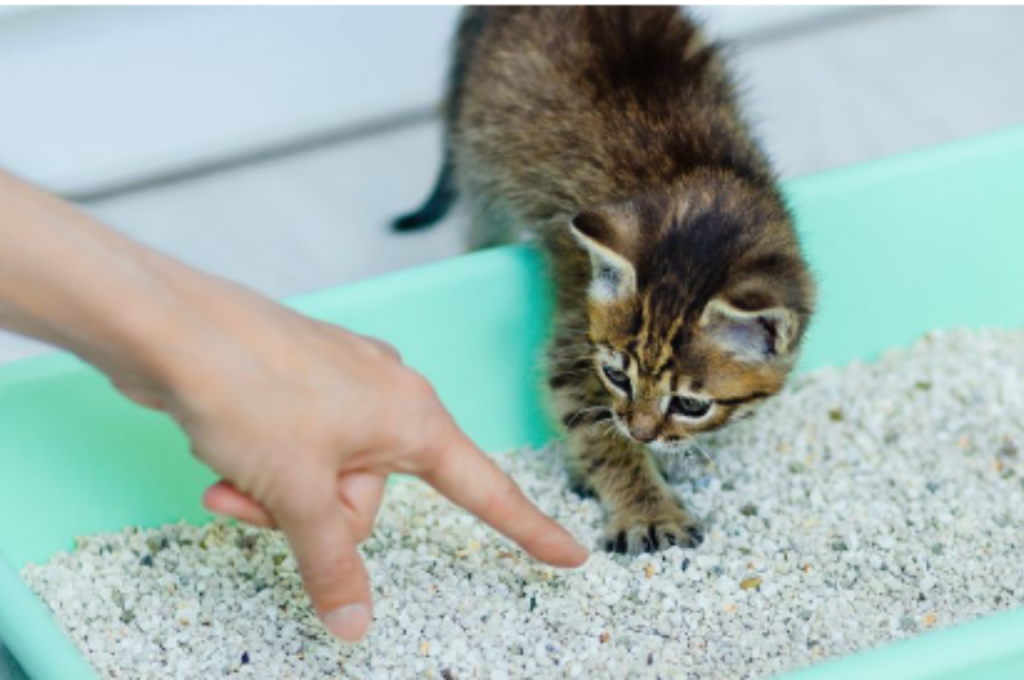To understand how to train a small cat, start with establishing a routine and using positive reinforcement techniques like treats and praise. Focus on basic commands such as “come,” “sit,” and “stay,” keeping training sessions brief and engaging, ideally around 5-10 minutes.
Gradually increase the difficulty of tasks as your cat becomes more comfortable. Incorporating playtime and interactive toys can make learning fun and effective.
Additionally, socializing your cat by exposing them to different environments and people can enhance their adaptability and confidence. Tailoring the training to your cat’s unique personality and preferences ensures a rewarding and successful experience for both you and your feline friend.
Understanding Your Small Cat
When it comes to training a small cat, one of the most important aspects to consider is understanding their psychology and individual personality traits. By recognizing these unique characteristics, you can tailor your training methods to suit their needs and ensure a successful and fulfilling training experience.

In this section, we will delve into the basics of cat psychology and explore how to recognize the individual traits of your small cat.
Cat Psychology 101
To effectively train your small cat, it is essential to have a basic understanding of their psychology. Cats are independent creatures with strong instincts and unique behaviors. They have a natural curiosity and love to explore their surroundings. Understanding these traits will help you create a positive and stimulating environment for your small cat.
Cats are creatures of habit and routine. They thrive on consistency and structure in their daily lives. Establishing a regular feeding schedule, playtime, and grooming routine will help create a sense of security and comfort for your small cat. Consistency in training sessions is also crucial to their learning process.
Recognizing Individual Personality Traits
Each small cat has their distinct personality traits. Just like humans, cats have varying temperaments and preferences. Recognizing and understanding these traits will enable you to tailor your training methods to suit their specific needs and personality.
Here are some common personality traits you may encounter when training a small cat:
- Playful: Some small cats have a playful nature and are easily motivated by interactive toys or games. Incorporate these in your training sessions to keep them engaged and motivated.
- Shy: Other small cats may be more reserved and shy. They might require a more gentle and patient approach during training. Provide them with a safe and quiet space to feel comfortable and build trust.
- Curious: Many small cats have a natural curiosity and love to explore. Use this to your advantage by creating a stimulating environment with climbing structures and puzzle toys.
- Independent: Cats are known for their independent nature. They value their personal space and may not respond well to forceful training methods. Give them the freedom to make choices and use positive reinforcement techniques.
By recognizing these individual personality traits in your small cat, you can create a bespoke training plan that caters to their unique needs. This personalized approach will enhance their learning experience and strengthen the bond between you and your furry companion.
Preparing for Training
Discover techniques for establishing routines, using positive reinforcement, and creating a supportive environment for your feline friend.
Creating a Safe And Conducive Environment
Before you start training your small cat, it’s essential to ensure that the environment is safe and conducive to learning. Cats thrive in a calm and secure setting, so eliminate any potential hazards and create a space where your cat feels comfortable. Remove any toxic plants or small objects that could be ingested. Also, make sure the training area has minimal distractions to help your cat focus on the training sessions.
Gathering The Right Training Supplies
Equipping yourself with the right training supplies is crucial for a successful training journey with your small cat. Get a variety of interactive toys that will serve as both rewards and tools for training exercises. You will also need treats that your cat loves to use as positive reinforcement. Additionally, consider using a clicker as a training aid, which can help in reinforcing desired behaviors.
Basic Training Techniques
Train your small cat with these basic techniques that are effective and easy to follow. Learn how to teach behaviors through positive reinforcement and create a strong bond with your feline friend.
Basic Training Techniques Training a small cat can be a rewarding experience for both you and your feline friend. Utilizing basic training techniques can help establish good behavior and strengthen the bond between you and your cat. When it comes to training, it’s essential to understand the difference between positive reinforcement and punishment and how to use these techniques effectively.
Additionally, teaching simple commands can make daily interactions with your cat much smoother. Let’s explore these basic training techniques in detail.
Positive Reinforcement Vs. Punishment
Positive reinforcement involves rewarding your cat for exhibiting the desired behavior. This can be done through treats, praise, or playtime. Avoid punishment, as it can create fear and aggression in your pet. Instead, focus on redirecting unwanted behavior and rewarding good behavior to encourage your cat to continue displaying positive actions.

Teaching Simple Commands
When teaching your small cat simple commands, consistency is key. Start with basic commands such as “sit” or “come.” Use a clicker or a verbal cue followed by a treat to reinforce the behavior. Keep training sessions short, around 5-10 minutes, to maintain your cat’s interest and focus. Gradually increase the difficulty of the commands as your cat becomes more adept at following instructions.
In conclusion, utilizing positive reinforcement and teaching simple commands are essential for training a small cat successfully. By employing these techniques, you can foster a positive relationship with your feline companion while promoting desirable behavior.
Advanced Training Strategies
Learn advanced training strategies on how to train a small cat. Focus on complex commands like “roll over” and “fetch,” using positive reinforcement and clicker training. Keep sessions engaging and brief, gradually increasing difficulty. Tailor techniques to your cat’s personality for effective and enjoyable training.
Building on Basic Commands
Once your small cat has mastered the basic commands, it’s time to take the training to the next level. Building on the foundation of basic commands like sit, stay, and come, you can introduce more complex behaviors such as high-fives, spins, and retrieving objects.
Utilizing Clicker Training
Clicker training can be an effective tool for teaching advanced skills to a small cat. When the cat performs a desired behavior, use a clicker to make a distinct sound followed by giving a treat. This positive reinforcement helps the cat understand which behaviors are being rewarded, making it easier for them to learn advanced tricks.
Addressing Behavioral Issues
When it comes to training a small cat, addressing behavioral issues is crucial for a harmonious relationship. From dealing with aggression or fearfulness to curbing destructive behaviors, understanding your cat’s actions is key.
Dealing With Aggression or Fearfulness
- Identify triggers for aggression or fear in your cat
- Provide a safe space for your cat to retreat to
- Avoid punishment, as it can worsen aggression
- Use positive reinforcement to encourage calm behavior
Curbing Destructive Behaviors
- Provide appropriate outlets for scratching and chewing
- Keep valuable items out of reach to prevent destruction
- Engage your cat in interactive play to expel excess energy
- Utilize puzzle toys to stimulate and redirect destructive tendencies
Maintaining Obedience
Training a small cat is a rewarding process, but it’s essential to maintain obedience for long-term success. Here’s how you can ensure your feline friend stays on track:
Consistency Is Key
Consistency in your training methods and expectations is crucial for your cat to understand and comply with your commands. Make sure to establish clear rules and reinforce them consistently.
Troubleshooting Training Challenges
If you encounter difficulties during training, it’s important to identify the root cause and address it promptly. Common challenges may include a lack of motivation or distractions in the environment.
Celebrating Success
Training a small cat can be a rewarding experience for both you and your feline companion. As your cat learns new skills and behaviors, it’s important to make sure you celebrate their success along the way. This not only reinforces their training but also strengthens the bond between you and your furry friend.
In this section, we’ll explore different ways to celebrate your cat’s achievements and enhance the connection you have with them.
Rewards and Bonding Activities
Giving your cat rewards for their successful training sessions is a great way to encourage their progress and show them that they’re doing a fantastic job. Consider using treats as a positive reinforcement tool. Whenever your cat successfully completes a command or behaves well, reward them with a small treat that they love.
This will create a positive association between their good behavior and the reward. Remember to choose treats that are specifically designed for cats and avoid anything that may be harmful to their health.
Another way to celebrate your cat’s success is by engaging in bonding activities together. These activities not only provide mental and physical stimulation for your cat but also allow you to strengthen your unique connection with them.
Try interactive play sessions using toys that encourage them to chase, pounce, and leap. This not only provides exercise for them but also allows you to bond as you play together. Consider getting a feather wand toy or puzzle toys that require problem-solving, as these can be particularly engaging for your small cat.
Embracing The Unique Connection with Your Feline Companion
Training a small cat is not just about teaching them new commands, but also about embracing the unique connection you share with your feline companion. Take time to observe and understand your cat’s individual personality and preferences.

This will help you tailor your training methods and choose activities that resonate with them. Remember, each cat has their own unique way of learning and expressing themselves, so it’s important to be patient and adapt your training approach accordingly.
When celebrating your cat’s success, be sure to provide the right environment for them to flourish. Make sure your home is a safe and comfortable space where they can explore, play, and relax. Create designated areas for them to scratch, sleep, and enjoy some alone time. By providing a nurturing and stimulating environment, you are setting the stage for continued success in your cat’s training journey.
Frequently Asked Questions
Here are some commonly asked questions about how to train a small cat:
How Do You Discipline a Small Cat?
To discipline a small cat, use positive reinforcement with treats, toys, and praise. Redirect unwanted behavior, and never use physical punishment. Consistent training and a safe environment are key.
How Do You Train a Little Cat?
To train a little cat, use positive reinforcement like treats for good behavior. Be consistent with training sessions and patience.
Are Cats Easy to Train?
Yes, cats can be trained. They are intelligent and can learn basic commands and tricks. With patience and positive reinforcement, you can teach them habits like using a litter box or not scratching furniture. Training methods may vary depending on the cat’s personality and willingness to cooperate.
How Do You Teach a Cat No?
To teach a cat “no,” use a firm, consistent tone and say “no” when they misbehave. Redirect their behavior and reward good behavior with positive reinforcement, such as treats. Be patient as it may take time for the cat to learn.
Conclusion
To conclude, training a small cat requires patience, consistency, and positive reinforcement. By following the steps outlined in this blog post, you can establish a strong bond with your feline companion and teach them essential commands. Remember to keep training sessions short and enjoyable, focusing on rewarding good behavior.
